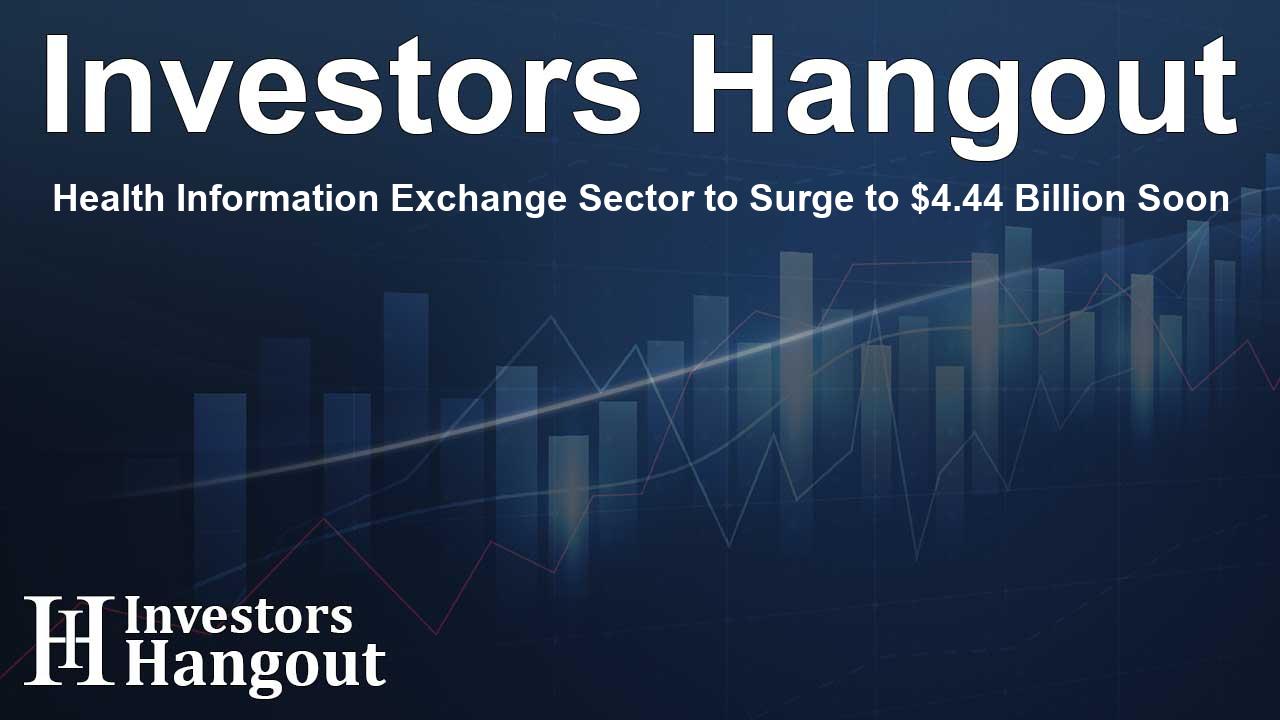Health Information Exchange Sector to Surge to $4.44 Billion Soon

Exciting Growth Ahead for the Health Information Exchange Market
The health information exchange market is on a trajectory of impressive growth, with future projections estimating a rise from an estimated value of USD 2.31 billion in 2025 to USD 4.44 billion by 2032. This translates to a remarkable compound annual growth rate (CAGR) of 9.8% during this period. Such growth is propelled by a notable increase in the need for interoperability and smooth data exchange among various healthcare entities, including providers, payers, and patients.
Drivers of Market Expansion
Electronic Health Records Adoption
A primary force behind this surge is the rising adoption of electronic health records (EHRs). Many healthcare providers are moving from traditional paper records to digital formats, which is crucial for data sharing. For example, around 88.2% of office-based physicians in the United States are utilizing EHR systems, according to health statistics. This shift towards electronic documentation emphasizes the necessity for efficient health information exchange (HIE) platforms.
Addressing Chronic Disease Management
Furthermore, the increasing burden of chronic diseases, which requires coordinated care, is intensifying demand for HIE solutions. These solutions facilitate better population health management, allowing for rapid and secure data sharing among providers. As more patients require integrated care approaches, HIE systems are becoming indispensable.
Challenges Faced by the Industry
Despite the promising outlook, the health information exchange market faces challenges. Data privacy concerns loom large, as breaches in health information can erode trust and lead to compliance issues. Such risks may deter potential users from adopting HIE solutions. Additionally, the costs associated with implementing and maintaining these systems can be a barrier, especially in regions with tighter budgets.
Opportunities for Innovation
Rising Data Volumes Create Demand
The rapid increase in health data—stemming from diagnostics, patient monitoring, medical imaging, and more—presents significant opportunities for HIE vendors. More sophisticated and secure data exchange solutions are needed to manage the increasing volumes effectively. By addressing these demands, companies in the health information exchange space can unlock new growth avenues.
Artificial Intelligence's Role in HIE
Artificial Intelligence (AI) is rapidly becoming an integral aspect of the HIE landscape. It transforms platforms from mere data exchange into proactive tools for improving care coordination and patient outcomes through predictive analytics. Vendors are increasingly incorporating AI capabilities into their HIE platforms to automate data handling processes and provide real-time clinical decision support.
Emerging Health Information Exchange Trends
Cloud Technology Making Waves
The growing preference for cloud-based solutions is reshaping the HIE market by providing scalability and remote accessibility. This has made these systems particularly appealing to healthcare providers seeking efficient and adaptable solutions.
The Importance of Interoperability
Additionally, a concerted demand for interoperability in healthcare systems is anticipated to bolster HIE market values significantly. Many healthcare systems operate in silos, making it difficult to exchange patient information seamlessly. Bridging these gaps will further highlight the importance of HIE, fostering essential data exchanges.
Market Competitors and Key Players
Several key players are at the forefront of the health information exchange market, including major corporations such as Cerner Corporation, Epic Systems Corporation, and InterSystems Corporation. These companies are continuously innovating and developing solutions to stay competitive in this rapidly changing market environment.
Future Outlook
The health information exchange market is positioned for robust growth as the healthcare landscape continues evolving. The focus on value-based care and the transition towards more integrated solutions will further stimulate market progress. With a combination of advanced solutions and an emphasis on data sharing, the future looks bright for health information exchanges.
Frequently Asked Questions
What is the projected value of the health information exchange market by 2032?
The market is expected to reach USD 4.44 billion by 2032.
What factors are driving growth in the health information exchange market?
The growth is primarily driven by increased adoption of electronic health records and the need for better chronic disease management.
What challenges does the market face?
Challenges include data privacy concerns and the high costs associated with implementation.
How does artificial intelligence impact the HIE market?
AI enhances HIE platforms, enabling them to provide predictive analytics and improve care coordination.
Who are the major players in the health information exchange market?
Key players include Cerner Corporation, Epic Systems, and InterSystems Corporation.
About The Author
Contact Dominic Sanders privately here. Or send an email with ATTN: Dominic Sanders as the subject to contact@investorshangout.com.
About Investors Hangout
Investors Hangout is a leading online stock forum for financial discussion and learning, offering a wide range of free tools and resources. It draws in traders of all levels, who exchange market knowledge, investigate trading tactics, and keep an eye on industry developments in real time. Featuring financial articles, stock message boards, quotes, charts, company profiles, and live news updates. Through cooperative learning and a wealth of informational resources, it helps users from novices creating their first portfolios to experts honing their techniques. Join Investors Hangout today: https://investorshangout.com/
The content of this article is based on factual, publicly available information and does not represent legal, financial, or investment advice. Investors Hangout does not offer financial advice, and the author is not a licensed financial advisor. Consult a qualified advisor before making any financial or investment decisions based on this article. This article should not be considered advice to purchase, sell, or hold any securities or other investments. If any of the material provided here is inaccurate, please contact us for corrections.
